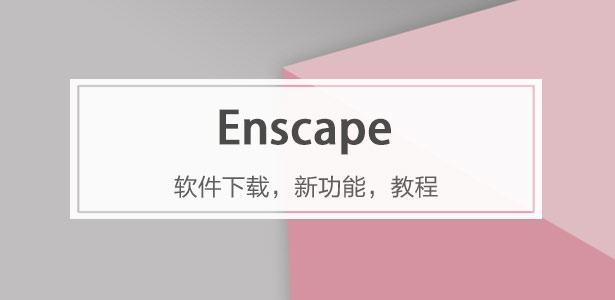* 主體類型
* 企業名稱
* 信用代碼
* 所在行業
* 企業規模
* 所在職位
* 姓名
* 所在行業
* 學歷
* 工作性質
請先選擇行業
您還可以選擇以下福利:
行業福利,領完即止!

下載app免費領取會員



Casa di Langa:意大利山間葡萄園中的奢華新生
Casa di Langa reimagines age-old luxury in the lap of mountains and vineyards in Italy
由專筑網SL,小R編譯
GaS Studio和Parisotto + Formenton Architetti (P+F)重新詮釋了皮埃蒙特地區的原型元素,使建筑既能擁有本土風格,又具有當代特色。
在意大利皮埃蒙特地區連綿起伏的山丘間,切雷托朗格村莊的葡萄園中,坐落著一家新建的可持續奢華精品酒店Casa di Langa。這座酒店的建筑、規劃和設計汲取了鄰近聯合國教科文組織世界遺產區域建筑的靈感,同時巧妙地融入了周圍的自然景觀。這片土地是世界頂級葡萄酒和白松露的故鄉,環境得天獨厚。項目團隊對小山頂上的一座現有建筑進行了改造和再利用,周圍環繞著42公頃正在運營的葡萄園和榛子種植園。附近的林區是采集聞名世界的白松露的理想場所,進一步提升了這片土地的價值。
GaS Studio and Parisotto + Formenton Architetti (P+F) reinterpret archetypal elements of the Piedmont region to allow the structure to be perceived as both vernacular and contemporary.
Nestled among the rolling hills of Italy’s Piedmont region in the hamlet of Cerreto Langhe amid vineyards is a new sustainable luxury boutique hotel, Casa di Langa. The architecture, planning and design of Casa di Langa is inspired by the architecture of the neighbouring UNESCO World Heritage designated area, while also carefully responding to the surrounding landscape that is home to some of the finest wines and white truffles in the world. The project has reused and redeveloped an existing building that sits on top of a small hill in a vast estate surrounded by 42 hectares of working vineyards and hazelnut plantation, as well as a wooded region that is ideal for foraging the famed white truffle mushrooms.

Image: Courtesy Parisotto + Formenton Architetti
米蘭兩家知名設計公司GaS Studio和Parisotto + Formenton Architetti (P+F)聯手打造了這個項目,他們巧妙地對現有建筑進行了適應性改造。設計團隊從當地鄉村和歷史建筑中汲取靈感,但并非簡單地照搬歷史元素,而是將當地建筑傳統和材料以創新方式融入整體設計中。設計師們對傳統元素進行了富有創意的重新詮釋。比如,他們沒有直接復制典型的拱形門廊和外部走廊,而是設計了富有節奏感的磚砌屏風,既能過濾陽光,又能保證良好通風。這些紅磚和紅色屋頂瓦正是該地區的標志性建筑元素,通過這種創新應用,使整個建筑既保留了濃厚的地方特色,又展現出鮮明的當代建筑語言。
It has been designed by Milan-based design firms GaS Studio and Parisotto + Formenton Architetti (P+F) who worked collaboratively to execute the overall adaptive reuse design of the existing structure. The structure, inspired by the rural and historic architecture of the region, integrates local building traditions and materials to envelope the building. The architects and designers are however careful to not replicate their historical references. Instead, they reinterpret the traditional elements such as the arched porticos and the external corridors with a rhythmic brick screen that acts as a filter that ensures shade and ventilation. The bricks and the red roof tiles are archetypal elements of the region, and allow the structure to be perceived as both vernacular and contemporary architecture.


設計團隊對傳統與現代的平衡處理極為用心。特別是那些磚砌屏風,它們并非隨意選擇,而是設計師們對皮埃蒙特地區建筑環境主色調進行深入研究后的成果。項目中使用的每一種材料——從石材、灰泥、涂料到紡織品,都經過精挑細選,目的是喚起人們對周圍自然景觀的聯想。建筑外觀上,所有垂直元素都采用了統一的深紅色調,包括灰泥、磚塊、木材和屋頂瓦片。而水平面則全部使用盧塞恩花崗巖,但巧妙地變換了紋理——有平整的板材,也有粗獷的塊石,從精致的鋪路石到自然的碎石,豐富了視覺體驗。整個建筑的色彩和色調達成了奇妙的和諧。木質桁架、墻面顏色、地板和赤陶屏風相互呼應,仿佛它們天生就屬于這座建筑。盡管如此,每種材料依然保持了其獨特的質感和特性,讓整體既統一又富有層次。
This balance was a design aspect that GaS Studio and Parisotto + Formenton Architetti were very mindful of. The brick screen in particular is the result of extensive research on the dominant colours of the built environment of Piemonte. Stones, plasters, paints, textiles, all were carefully selected to remind one of the surrounding landscapes. On the exterior of the structure, all the vertical elements such as the stucco, brick, wood and roof tiles are a shade of deep red. All the horizontal surfaces are Lucerne granite but in multiple textures ranging from slabs to blocks and pavers to gravel. There is a synergy in the colour and tonality of the building. The wooden trusses, the wall colour, flooring and terracotta screen all work together and give one the perception that they have perhaps always been a part of the structure. Yet each material retains its tactility and characteristics.

這座酒店所用的材料不僅體現了設計師們的視覺美學追求,更展示了他們對世代相傳手工藝的尊重與探索。外立面上那些富有質感的赤陶瓦片出自Brioni家族之手,這個家族幾代人都在建筑中精心運用土質材料,積累了豐富的經驗與技藝。步入室內,溫暖而熱情的氛圍立即包圍著客人,完美契合人們對奢華精品酒店的想象。整個建筑采用C形布局,巧妙地環抱著一個開放式廣場。這個廣場順應山勢,向山谷方向層層展開,形成一系列如梯田般的平臺,自然而優雅。建筑的三個翼樓如同畫框,將周圍令人屏息的美景盡收眼底。每間客房都配有寬敞的私人露臺,以及設計精良的雨淋式淋浴浴室。所有房間的設計理念都忠實于酒店的自然美學風格,大量采用橡木、赤陶、天然石材、上乘皮革和通透玻璃等材料,營造出既豪華又親近自然的居住體驗。
The material story of the hotel speaks not only of the architects and designers visual research but of their exploration of generational craft practices. The terracotta tiles that make up the façade were created by the Brioni family who has worked with ‘earth in architecture’ for many generations. In the interiors, the atmosphere is warm and welcoming, and perhaps a little more in line with what one would expect in a luxurious boutique hotel. The building is developed in a C-shaped plan that encircles an open piazza that cascades down the hillside in a progression of terraces towards the valley. The three wings of the building frame the breathtaking view that surrounds this beautiful location. Each accommodation features a spacious private terrace and a bathroom with a rain shower. All of the rooms are designed to reflect the hotel’s natural aesthetic of oak, terracotta, stone, leather and glass.


酒店的中央廣場散發著一種修道院般的寧靜氣質。這種獨特氛圍一方面源于那些富有節奏感的磚砌屏風,另一方面也反映了設計師從周邊歷史建筑中汲取的靈感,特別是那些政府或宗教性質的建筑物所使用的材料和色彩。這個中央空間的設計重新定義了整個建筑的體量感和主要人流動線。廣場作為整個建筑的核心元素,使得客人在建筑內的流線更加合理流暢。同時,這一設計也為建筑群提供了在各樓層增設電梯的可能性,讓客人既能直接感受鄉村美景,又能保持私密性,兩全其美。
The central piazza has a monastic appearance. A trait that could be attributed to the rhythm of the brick screen or an indication of how the inspiration of the material and colour of the neighbouring heritage structures, many of which are ministerial or religious. This central void re-envisions the structure's massing and main circulation. The piazza acts as a centralising element which allows for a more rational movement pattern across the structure. It also allows the complex to add elevator access to all floors, providing guests with a direct connection to the countryside and its vista while preserving privacy.



沿著廣場繼續向下,臺階自然地隨著山勢蜿蜒而下,與地形完美融合。在這條下行路徑的盡頭,一座游泳池靜靜地等待著客人。有趣的是,當游客驅車上山時,這個游泳池往往是映入眼簾的第一個酒店景觀。這一設計細節與建筑中其他精心安排的景觀視角形成了鮮明對比,引發人們思考:建筑究竟是為了從內部向外欣賞風景而設計,還是為了從外部欣賞建筑本身?這種思考同樣適用于觀察整個建筑與場地的關系,設計師顯然更注重居住者的體驗,而非外部觀者的視角。這種由內而外的設計理念,賦予了整個項目獨特的魅力與深度。
As one descends further down the piazza, the steps follow the natural slope of the hill. At the of which there is a swimming pool. As one drives up the hill this detail is one of the first views that you encounter of the hotel. When compared to some of the other vistas that are carefully incorporated in the structure, it does raise an interesting dialogue about architecture that is conceptualised to be viewed from the inside looking out, as opposed to being on the outside looking in. This is also true when one looks at the mass of the structure as it sits on the hill.


作為2021年新開業的酒店,Casa di Langa在當代建筑設計中融入了一些如今已成為標準的環保理念。其中最為核心的,就是對減少碳足跡和降低建筑對環境影響的高度重視。這座酒店的設計理念根植于對自然世界的深刻敬意和對可持續未來的堅定承諾。Casa di Langa被譽為奢華可持續性的典范,這一理念貫穿整個項目的每個環節。為了實現這一目標,設計團隊采取了多種措施,其中之一就是盡可能使用當地采購的材料和回收再利用的資源。為了保護和提升場地的生態價值,項目中做出了許多環保的設計決策。這也解釋了為何最終建筑在山上的布局和體量呈現出這樣的形態,它完全符合酒店及其所有者Krause集團一貫堅持的生態敏感性原則。在Casa di Langa,奢華與環保不再是對立的概念,而是相輔相成、相得益彰。
As a hotel opening in 2021, there are a few details that are now commonplace when thinking about contemporary architecture. The primary of which is the importance of reducing the carbon footprint and the ecological impact of architecture. Ingrained in the very conceptualisation of Casa di Langa is a deep respect for the natural world and its sustainable future. Stated to be a location that inculcates ‘Luxurious Sustainability’, it is a common thread that is visible in the entire intervention. One of the ways in which they have attempted to acquire locally sourced and recycled materials. Various ecologically responsible choices were made to preserve and improve the site, which would also explain the massing of the final structure on the hill, which stays true to the hotel and its proprietor's, the Krause Group, axiom of being ecologically sensitive.

項目詳情
項目名稱:Casa di Langa
位置:意大利
面積:42公頃
竣工年份:2021年
建筑師和設計師:GaS Studio和Parisotto + Formenton Architetti
項目管理:Arcadis Italia srl
設備與結構:Bre Engineering srl - Euclide
景觀設計:Land srl
照明設計:PSLab
承建商:Malabaila&Arduino s.p.a.
建設時間:2019年開工 - 2021年春季竣工
攝影:Alberto Strada
造型設計:Elisa Musso
Project Details
Name of the project: Casa di Langa
Location: Italy
Area: 42 Hectares
Year of completion: 2021
Architect and Designers: GaS Studio and Parisotto + Formenton Architetti
Project management: Arcadis Italia srl
Mechanical & structural engineering: Bre Engineering srl - Euclide
Landscape design: Land srl
Lighting design: PSLab
Contractor: Malabaila&Arduino s.p.a.
Timeline: construction began 2019 - completed spring 2021
Photography: Alberto Strada
Styling: Elisa Musso
本文版權歸腿腿教學網及原創作者所有,未經授權,謝絕轉載。

猜你喜歡

BIM建筑|上海院新作:臨港青少年活動中心(臨港少年宮)

BIM建筑|雪山下的棲身所:星山月影懸崖民宿 / 萬謙集設計

建筑賞析|穿越古今!蘇州當代美術館:屋蓋成廊,山水入畫

建筑賞析|打造合肥新地標:科大訊飛AI總部園區(一期)

BIM建筑|經典再讀228 | 薩拉巴伊別墅/勒·柯布西耶:花園宮殿

BIM建筑|建筑地圖257|哥德堡:瑞典式優雅
最新課程
推薦專題









































